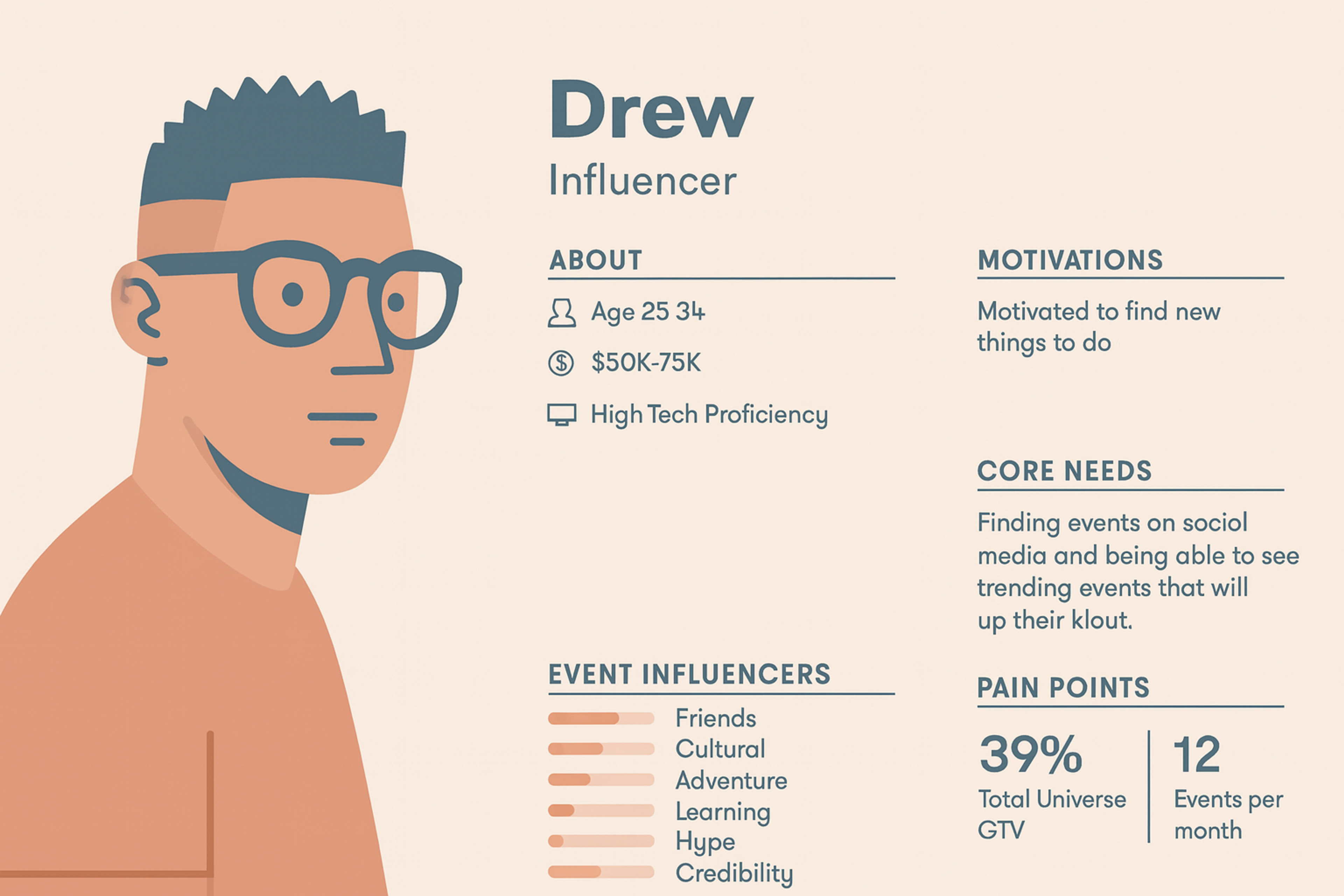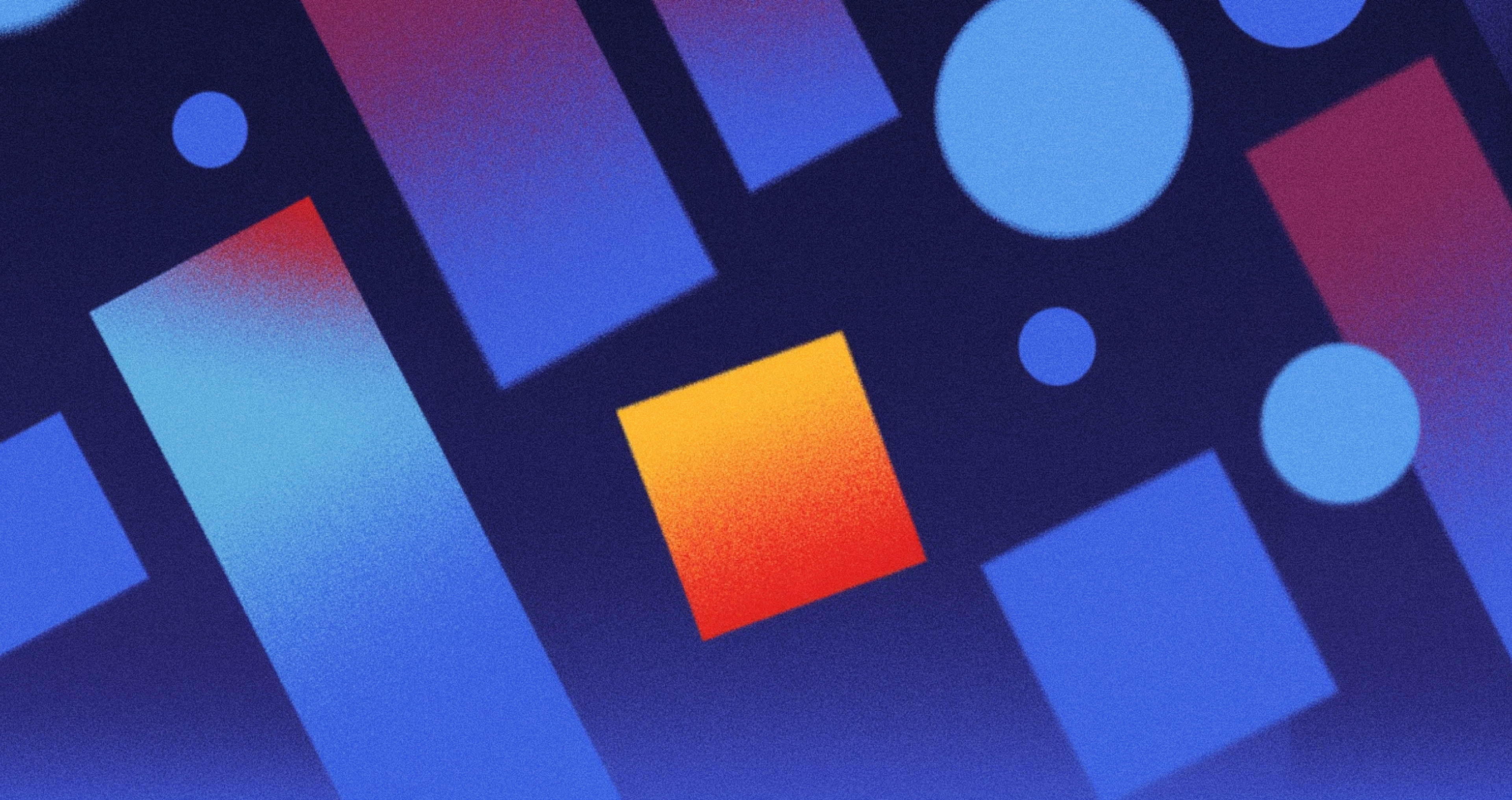Building something for everyone will lead to creating something for no one, as it might not effectively meet the needs of the target audience.
Personas help with such disconnects. They are synthesized characterizations based on your actual users. Think of them as comprehensive profiles that focus on who you are designing for, their requirements, the reasons for those requirements, and the target users’ preferences.
User personas are fictional characters created to provide a clear picture of your users, based on market research and real data. User-centered, research-driven personas eliminate the guesswork and provide valuable insights that allow your team to create the right products.
This article post will help you understand how to optimize work personas.
What User Personas Are
User personas, as described previously, are fabricated individuals built off actual user research. User personas are constructed using fictional personal details to represent a real person in your target audience.
Alan Cooper is credited with introducing user personas in his 1998 book The Inmates Are Running the Asylum, where he termed them as “presumptive archetypes of real users.” He created them as part of his Goal-Directed Design methodology.
These archetypes go beyond the basic tiers of age and geographical location. They capture objectives and their frustrations, habits, and drives. Effective personas allow you to design with users, instead of people.
Don Norman’s user-centered philosophy, described in The Design of Everyday Things, begins with addressing users’ requirements and actions. While he does not explicitly identify personas, they perfectly complement his design philosophy.
Personas transform data and research into something the team can utilize and develop, especially when utilizing user personas effectively. Focusing on a specific persona enhances targeting and design decisions, ensuring your solutions are tailored to the right audience.
Source: Freepik

Why User Personas Matter
Personas transform the way design teams function and collaborate. By fostering a shared understanding of user needs and goals, personas help ensure the design team stays on the same page throughout the project. Here’s how: through effective persona creation and understanding their importance.
Build Empathy and Understanding
Understanding the users and seeing them as actual people helps create appropriate, more intuitive solutions.
Connecting with users on a personal level and considering the user's perspective leads to more effective design by ensuring that products truly meet their needs.
Removing assumptions and moving towards personas allows teams to develop products that address real problems instead of imagined ones.
Align Team Decisions
In his book Don't Make Me Think, author Steve Krug discusses how team members think of different users. This results in different assumptions and confusion within the team, wasting valuable time. Steve suggests performing usability tests to unveil real users' behaviors.
Confusion and fog in a design process speed up and become clearer when developers, designers, and marketers have the same mindset and understanding. Similarly, decision-making becomes much easier and more efficient.
Focus Design Efforts
Personas greatly accompany prioritizing certain features and making difficult decisions. “What should we build?” is replaced with “What would Sarah need the most?”
This is how the primary persona becomes the guiding star. Defining user persona goals and envisioning the ideal user helps teams prioritize features and make better design decisions.
In conclusion, catering to the specific and primary users to offer excellent service, rather than trying to please everyone, serves them poorly.
Business Impact
When crafted carefully, user personas offer real results and outcomes. As a result, user persona users get more conversions as their products accurately meet their users’ needs, backed by real world data.
By understanding user needs and considering potential users - those who could benefit from the product but are not yet engaged - businesses can further improve product adoption and retention.
Personas help avoid the wasted effort of developing features that users do not wish to use. They assist teams in concentrating their efforts in the most productive areas.
Users will tend to stick to services longer and even advocate for them if the products they use adequately fulfill their needs. This results in lower user acquisition costs and facilitates the generation of stable growth.
Types of User Personas
Different projects require unique approaches. Below are the main types. Identifying distinct personas for each user segment ensures that the specific needs, goals, and behaviors of different groups are effectively addressed.
Goal-Oriented Personas
These personas center on what users are trying to achieve. In The Elements of User Experience, Jesse Garrett mentions that a well-defined interaction design comes from a clear understanding of user goals.
Goal-oriented personas are relevant for task-oriented products like productivity tools and online shops. They assist in formulating less complex user flows. Analyzing behavior patterns and behavioral patterns helps refine goal-oriented personas by providing deeper insights into users' actions, motivations, and habits, leading to more accurate and effective persona development.
Maria needs to book a flight during her lunch hour. She will spend more time looking for a flight. This piece of information influences the entire checkout design.
Goal Directed Personas

Role-Based Personas
These personas focus on the user’s job or social position and apply to business applications and specialized tools.
Role-based personas assist in comprehending workflows, duties, and organizational limits.
David is an office manager who collaborates with other team members to schedule their calendars. He prefers systems that connect with different tools. His role determines what features he cares about. A tech savvy office manager, for example, might prioritize integration with digital tools and advanced features.
Role-based Personas Example

Proto-Personas (Quick Start Personas)
Proto-personas come from conjectures and sparse information. These hypotheses help people outline the design process while conducting research. They are helpful if the project is not too advanced and there are tighter research, time, or funds constraints.
Remember to confirm and revise proto personas and get valuable feedback from user research as soon as possible. These are not intended to last.
User Persona Example

Engaging Personas
These personas have intricate narratives and histories, allowing them to stand out. Including personality traits in engaging personas makes them more relatable and memorable. They are instrumental in marketing saturated with emotion.
Engaging personas helps teams remember and empathize with users throughout long project cycles. This focus enables them to think strategically long after a target is achieved.
How to Create User Personas
Creating effective personas follows the Design Thinking methodology. Here’s your roadmap: creating personas is a collaborative process where teams create and iterate on user personas to ensure they accurately reflect the target audience. The following steps will show you how to create a persona from start to finish.
Step 1: Research Your Users
Do not base your strategy on assumptions. Collect realistic data. Use a combination of research techniques to gain a holistic view. Market research is essential to collect data, including both quantitative data and qualitative data, ensuring you gather all the data and actual data needed for effective persona creation.
Have user interviews with a sample of 8 to 12 users. Investigate their pain points and aspirations. Aim to minimize the talk time.
To validate your qualitative insights, disseminate and analyze a survey to a larger sample. This data helps you gain quantitative insights. Collecting specific data points and analyzing behavioral data can reveal deeper user motivations and patterns.
Analyze user data to see their honest reactions to the product. Behavior data uncovers hidden information that interviews overlook.
Search for tickets recorded by the Customer Support team. Your support team often deals with these issues daily and is the best lever for identifying pain points.
Step 2: Identify Patterns
Your research’s goals, actions, and pain points define the clusters a user target might be grouped into. Identifying these patterns leads to a deeper understanding of your users and provides meaningful insights for persona development. These clusters form the basis of your personas.
It is not necessary to try to represent each user. Adding multiple personas does not improve clarity. Focus on two to four core personas. They represent your main segments. All additional personas create unnecessary confusion.
Step 3: Create Persona Profiles
Craft comprehensive profiles for each persona. Add what is critical, omit the rest. Using a user persona template can help organize user persona data and basic demographics when you create a user persona.
Develop a persona and assign a picture. This will make the persona easier for your team to digest. Focus on attributes relevant to product usage. These include age, location, and job title, but only if they affect behaviors.
Ensure the goals are well defined. What do they want to accomplish with your product? What is your definition of success? Make sure to think about short - and long-term objectives.
Examine the apprehensions they might have. What problems can your product resolve for them? What does the phrase “overcome obstacles” mean to you? What is the worst experience you have had with similar products?
User Persona Profile

Step 4: Add Context and Scenarios
Incorporating user scenarios demonstrating how personas would interact with your product makes static profiles more valuable. These scenarios should reflect the persona's everyday life and daily life, capturing their routines, habits, and lifestyle context to make them more relatable and actionable.
Sarah had to check her projects ten minutes before her first meeting on her commute. The app should help her prioritize what to check first.
These use cases help the teams to understand user flows and to make better design decisions. A step from user profiles to plans with profile usage.
Step 5: Validate and Refine
Use real user actions to test your personas. Do they align with your assumption on their usage of the product? Revise them through more findings and evaluations.
The personas should change as you learn more about your users. They are living documents, not folders.
Using Personas in Your Design Process
From the start, personas should accompany you throughout the entire design process. Building personas is essential for creating products that truly meet user needs and for developing effective marketing strategies that target specific audiences.
During research and strategy, use personas to help guide your questions. Dedicate a section to them in the product requirements document. Use them for opponent and market positioning.
Review each design and ensure the personas’ requirements have been implemented. Write user flows for specific situations. Use personas to help decide which features should be implemented first.
In the testing phase, recruit participants who align with the defined personas. Use the defined persona goals for the success measure. Employ a defined persona to assist in analyzing the proper marketing channels.
Common Mistakes to Avoid
Many people do struggle with personas. Here is how to avoid the most common issues.
Basing Personas on Assumptions: Personas without research contribute to the phenomenon of "elastic users, " who can stretch and bend to fit almost any design decision. Always use data to anchor personas. If data is lacking, they can be called proto-personas, but plans to validate them should quickly follow.
Creating Too Many Personas: An increased number of personas does not equate to enhanced design quality. Many personas only confuse the team and distract from the primary goal. One or two primary personas as a starting point is the most efficient. It is always possible to append more personas later should the need arise.
Common Personas Mistakes

Including Irrelevant Details: Wasting space to describe something that does not serve a purpose is a poor choice. Only information needed for interaction with the product should be included. Each detail should contribute to a design decision.
Making Personas Too Perfect: Reality is that users will be contradictory and bound by certain limitations. They will commit errors and be lost in a particular context. They have a point. If personas do not suffer or struggle, they have most likely been over-idealized, which makes them lose.
UX Persona Examples
Here are examples that show what works: These examples are designed to represent key segments of your user base.
The Influencer
The visuals in this persona template work well. It replaces long sections of descriptive text with visuals such as icons, significant figures, and bar graphs. Each section is structured and formatted clearly, so it's simple to skim.
The big picture adds character right away. You feel like you know this person within seconds of spotting the template.
Influencer Persona Example

The Software Architect
Lisa is a software architect living in New York. At thirty-two years of age, she heads the technical strategy of her company's operations.
Her background in computer science allows her to comprehend the inner workings of large corporations. She identifies the improvements as those organizations that are bureaucracy-bound, resistant to change, and slow to adopt new processes.
Lisa mainly works on communication improvement to streamline workflow automation. These strategies enable her team to transcend corporate barriers. She aspires to improve her company's capability to embody agility by increasing its innovation and efficiency.
The Sales Manager
This template stands out in its usefulness. It presents vital details in an easily digestible manner. Rather than long citations, it precisely quotes the aims and challenges with sharp comments.
The template's design is simple, but it promotes effectiveness. Team members can quickly retrieve the required information without digging through long texts. It is designed to help the corporate teams most when they need it.
Where to Find User Persona Templates
Use the internet. It is nearer than you think. There are plenty of sites that let you download templates for free. Template.net, HubSpot, and UXPin are keen on the field. Some downloadables come alongside guidelines that let you create personas in no time.
Source: Freepik

Try out creation tools like Xtensio. These platforms use interactive forms that facilitate the completion of customer data and make the creation of personas seamless.
Use the personas you created as benchmarks for various design decisions. These user personas will elucidate the user's actions and Likes, improving their experience.
Advanced Persona Techniques
Try these more advanced approaches once you are comfortable with the rudimentary aspects of personas.
- Jobs-to-be-Done Integration: Traditional personas are augmented with the Jobs-to-be-Done framework. Pay attention to the “job” a user uses your product for. This shifts the focus from the user’s demographics to the user’s psyche.
- Persona Journey Mapping: Create a detailed journey for every persona. Describe how, with time, the user comes to know, assesses, and uses your product. This can unveil opportunities that are hidden in dumbed-down profiles.
- Keeping Personas Updated with New Information: Personas need time and care to be current. They aren’t set-and-forget documents. They should be reviewed and updated quarterly or whenever new features, significant features, or new markets are added. Personas that no longer represent current users should be archived.
FAQ
How Many Personas Should We Create?
Start with 2-4 core personas representing your main user segments. You can always add more later as your understanding grows.
How Often Should We Update Personas?
Review personas quarterly and update them when you have significant new user research or when entering new markets.
What's the Difference Between Personas and User Archetypes?
Personas are detailed, research-based profiles of specific users that contain key data . Archetypes are broader, more general user categories. Personas provide more actionable guidance for design decisions.
Can We Use Personas for B2B Products?
Absolutely. B2B personas often focus more on roles, responsibilities, and organizational context, but the basic approach remains the same.
How Do We Validate that Our Personas Are Accurate?
Test persona predictions against actual user behavior. Do real users act the way your personas suggest they would? Adjust based on what you observe.
Read More:
Conclusion
User personas transform abstract research into concrete design guidance. They help teams build products for real people with real needs, including the buyer persona as a critical aspect of design .
Start with solid research. Focus on your most important user segments. Use scenarios to make personas actionable. Avoid assumptions, irrelevant details, and creating too many personas.
Most importantly, make personas a living part of your design process. Reference them in meetings. Use them to evaluate ideas. Update them as you learn more. When personas become second nature to your team, you'll see the difference in what you build.


About Clay
Clay is a UI/UX design & branding agency in San Francisco. We team up with startups and leading brands to create transformative digital experience. Clients: Facebook, Slack, Google, Amazon, Credit Karma, Zenefits, etc.
Learn more

About Clay
Clay is a UI/UX design & branding agency in San Francisco. We team up with startups and leading brands to create transformative digital experience. Clients: Facebook, Slack, Google, Amazon, Credit Karma, Zenefits, etc.
Learn more


